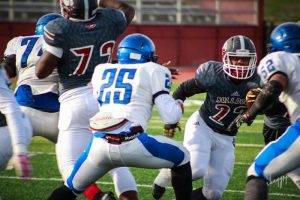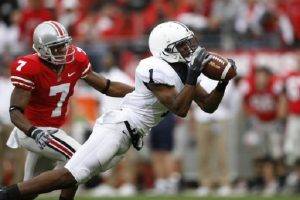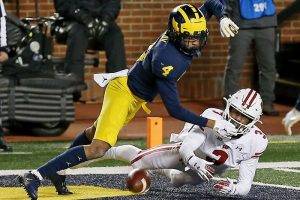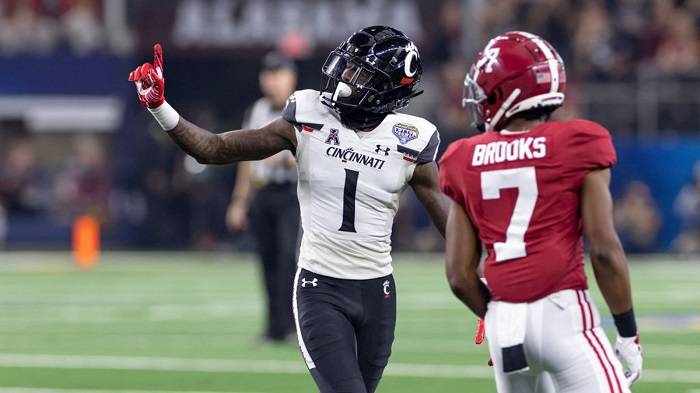Football, a sport characterized by intricate strategies, dynamic plays, and a complex array of positions, often uses abbreviations and acronyms to describe player roles and positions. One such abbreviation that echoes through the gridiron is “CB.” In this comprehensive exploration, we venture into the realm of football terminology, unraveling the mystery behind CB and shedding light on the crucial role of cornerbacks in the game.
Unveiling the Positional Landscape
The Tapestry of Football Positions
Positional Specialization:
Football positions are intricately woven into the fabric of the game, each serving a specific role in the team’s overall strategy. From quarterbacks orchestrating plays to defensive linemen disrupting offenses, the symphony of player positions creates the dynamic and strategic spectacle that is football.
Abbreviations in Football:
Abbreviations are commonly used in football to represent player positions concisely. These shorthand notations provide a quick reference for coaches, players, and fans alike, offering a glimpse into the strategic deployment of athletes on the field.
Demystifying CB: What Does CB Stand For?
CB Defined: The Cornerback’s Role
Cornerback (CB):
In football, CB stands for cornerback. Cornerbacks are defensive players whose primary responsibility is to cover the opposing team’s wide receivers. Positioned on the edges of the defensive formation, cornerbacks play a critical role in disrupting passing plays and preventing wide receivers from making receptions.
Versatility in Coverage:
Cornerbacks showcase versatility in their coverage skills, as they may be assigned to cover a specific wide receiver, play in zone coverage, or even blitz the quarterback. The agility, speed, and anticipation of cornerbacks are essential attributes for success in this position.
Navigating the Cornerback’s Skill Set
Essential Attributes of Cornerbacks
Speed and Agility:
Cornerbacks are often some of the fastest and most agile players on the field. Their ability to keep pace with speedy wide receivers, change direction quickly, and accelerate is crucial in preventing successful passing plays.
Coverage Techniques:
Cornerbacks employ various coverage techniques to disrupt opposing receivers. Techniques such as press coverage, where the cornerback engages the receiver at the line of scrimmage, and off-coverage, where the cornerback maintains a distance to react to the receiver’s movements, showcase the strategic nuances of the position.
Ball Skills and Awareness
Ball Tracking:
Exceptional cornerbacks possess the ability to track the ball in flight, anticipating its trajectory and making plays on the ball. Intercepting passes or deflecting throws intended for receivers requires a combination of ball-tracking skills and spatial awareness.
Field Vision:
Cornerbacks must have keen field vision to read the quarterback’s intentions, identify potential receiving targets, and react decisively to unfolding plays. A cornerback’s awareness of the overall dynamics on the field contributes to their effectiveness in coverage.
Cornerbacks in Defensive Schemes
Man-to-Man vs. Zone Coverage
Man-to-Man Coverage:
In man-to-man coverage, cornerbacks are assigned specific receivers to cover throughout the play. This individualized approach tests the cornerback’s one-on-one skills, requiring them to stick close to their assigned receiver and contest passes effectively.
Zone Coverage:
In zone coverage, cornerbacks cover a designated area of the field rather than a specific receiver. This collaborative approach involves reading the quarterback’s eyes, recognizing developing plays, and reacting collectively with other defensive players to neutralize passing threats.
Blitzing and Run Support
Blitz Packages:
Cornerbacks are not confined to pass coverage alone; some defensive schemes involve cornerbacks in blitz packages. Blitzing cornerbacks add an element of surprise to the defensive strategy, putting additional pressure on the quarterback and disrupting the offensive flow.
Run Support:
Cornerbacks are also expected to contribute to run support. This involves helping to contain running plays, providing support for tackles, and ensuring that the defense remains balanced in its approach to both passing and rushing threats.
The Journey to Becoming a Shutdown Corner
Development and Training
Technique Refinement:
Aspiring cornerbacks undergo extensive training to refine their coverage techniques. Footwork drills, agility exercises, and practice scenarios against various receiver types contribute to the development of a cornerback’s skill set.
Film Study:
Film study is a vital aspect of a cornerback’s preparation. Analyzing opponents’ tendencies, understanding quarterback behaviors, and studying the nuances of different offensive schemes empower cornerbacks to make informed decisions on the field.
Mental Toughness and Resilience
Isolation and Pressure:
Cornerbacks often find themselves in isolated situations, facing off against some of the most talented and agile athletes on the opposing team. The mental toughness to handle pressure, bounce back from challenging plays, and maintain focus throughout a game is a hallmark of successful cornerbacks.
Instinct and Reaction Time:
Instinctive decision-making and rapid reaction time are indispensable traits for cornerbacks. Whether it’s breaking on a pass, recognizing a run play, or executing a well-timed blitz, the ability to process information quickly separates elite cornerbacks from the rest.
The Cornerback’s Impact on the Game
Game-Changing Plays
Interceptions and Pass Breakups:
A well-timed interception or a crucial pass breakup by a cornerback can swing the momentum of a game. Cornerbacks with a knack for creating turnovers become game-changers, influencing the outcome through their disruptive plays.
Clutch Performances:
In critical moments of a game, cornerbacks are called upon to deliver clutch performances. Whether it’s a crucial stop on a third-down play or a game-sealing interception, the reliability of cornerbacks in high-pressure situations defines their impact on the field.
Cornerback Legends: Icons of Shut-Down Defense
Legacy-Building Cornerbacks
Deion Sanders:
Deion Sanders, often referred to as “Prime Time,” is a legendary cornerback who left an indelible mark on the position. Known for his exceptional speed, coverage skills, and playmaking ability, Sanders set the standard for shut-down cornerbacks in his era.
Darrelle Revis:
Darrelle Revis, nicknamed “Revis Island,” earned acclaim for his ability to neutralize top-tier receivers. Revis’s mastery of man-to-man coverage and his knack for creating turnovers solidified his status as one of the premier cornerbacks of his generation.
The Evolution of the CB Position
Modern Trends and Innovations
Specialized Roles:
In contemporary football, the cornerback position has seen specialization with players adopting specific roles. Some cornerbacks excel in slot coverage, handling receivers in the middle of the field, while others focus on boundary coverage against sideline threats.
Hybrid Players:
The emergence of hybrid players who can seamlessly transition between cornerback and safety roles adds a dynamic dimension to defensive strategies. These players bring versatility to the secondary, contributing both in coverage and run support.
Related Post:
The Unrivaled Grace and Power of Volleyball: A Sport Beyond Borders
The Art and Essence of Volleyball: A Sport Beyond the Court
The Dynamic World of Volleyball: A Celebration of Skill, Strategy, and Team Spirit
In the intricate tapestry of football, cornerbacks stand as guardians of the perimeter, entrusted with the task of thwarting aerial threats and disrupting offensive plans. The next time you see “CB” on the roster, know that it represents more than just an abbreviation; it signifies a pivotal player in the symphony of football, weaving their skills into the strategic fabric of the game.
As the game continues to evolve, so too will the role of cornerbacks, adapting to new offensive schemes, innovative passing attacks, and the ever-changing dynamics of football. The legacy of shutdown cornerbacks will endure, leaving an imprint on the sport’s history and inspiring the next generation of players to master the art of defending the perimeter.





